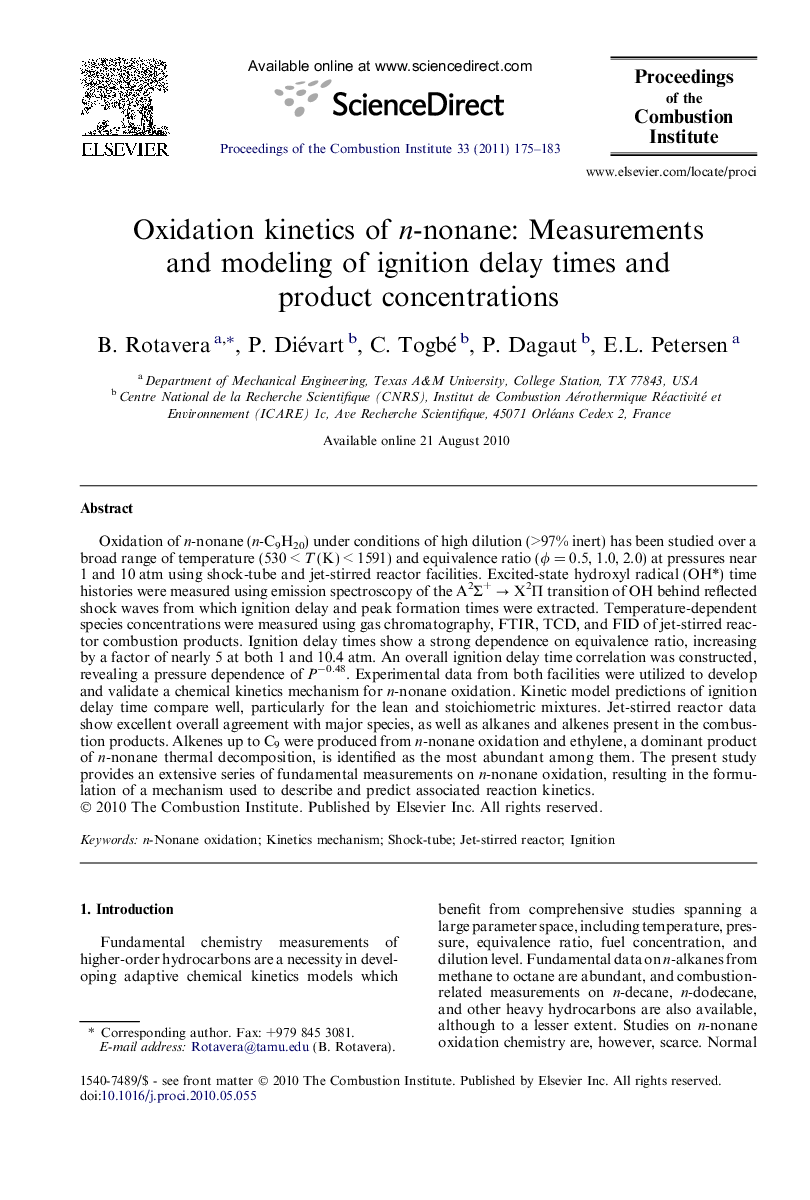| Article ID | Journal | Published Year | Pages | File Type |
|---|---|---|---|---|
| 241317 | Proceedings of the Combustion Institute | 2011 | 9 Pages |
Oxidation of n-nonane (n-C9H20) under conditions of high dilution (>97% inert) has been studied over a broad range of temperature (530 < T (K) < 1591) and equivalence ratio (ϕ = 0.5, 1.0, 2.0) at pressures near 1 and 10 atm using shock-tube and jet-stirred reactor facilities. Excited-state hydroxyl radical (OH∗) time histories were measured using emission spectroscopy of the A2Σ+ → X2Π transition of OH behind reflected shock waves from which ignition delay and peak formation times were extracted. Temperature-dependent species concentrations were measured using gas chromatography, FTIR, TCD, and FID of jet-stirred reactor combustion products. Ignition delay times show a strong dependence on equivalence ratio, increasing by a factor of nearly 5 at both 1 and 10.4 atm. An overall ignition delay time correlation was constructed, revealing a pressure dependence of P−0.48. Experimental data from both facilities were utilized to develop and validate a chemical kinetics mechanism for n-nonane oxidation. Kinetic model predictions of ignition delay time compare well, particularly for the lean and stoichiometric mixtures. Jet-stirred reactor data show excellent overall agreement with major species, as well as alkanes and alkenes present in the combustion products. Alkenes up to C9 were produced from n-nonane oxidation and ethylene, a dominant product of n-nonane thermal decomposition, is identified as the most abundant among them. The present study provides an extensive series of fundamental measurements on n-nonane oxidation, resulting in the formulation of a mechanism used to describe and predict associated reaction kinetics.
